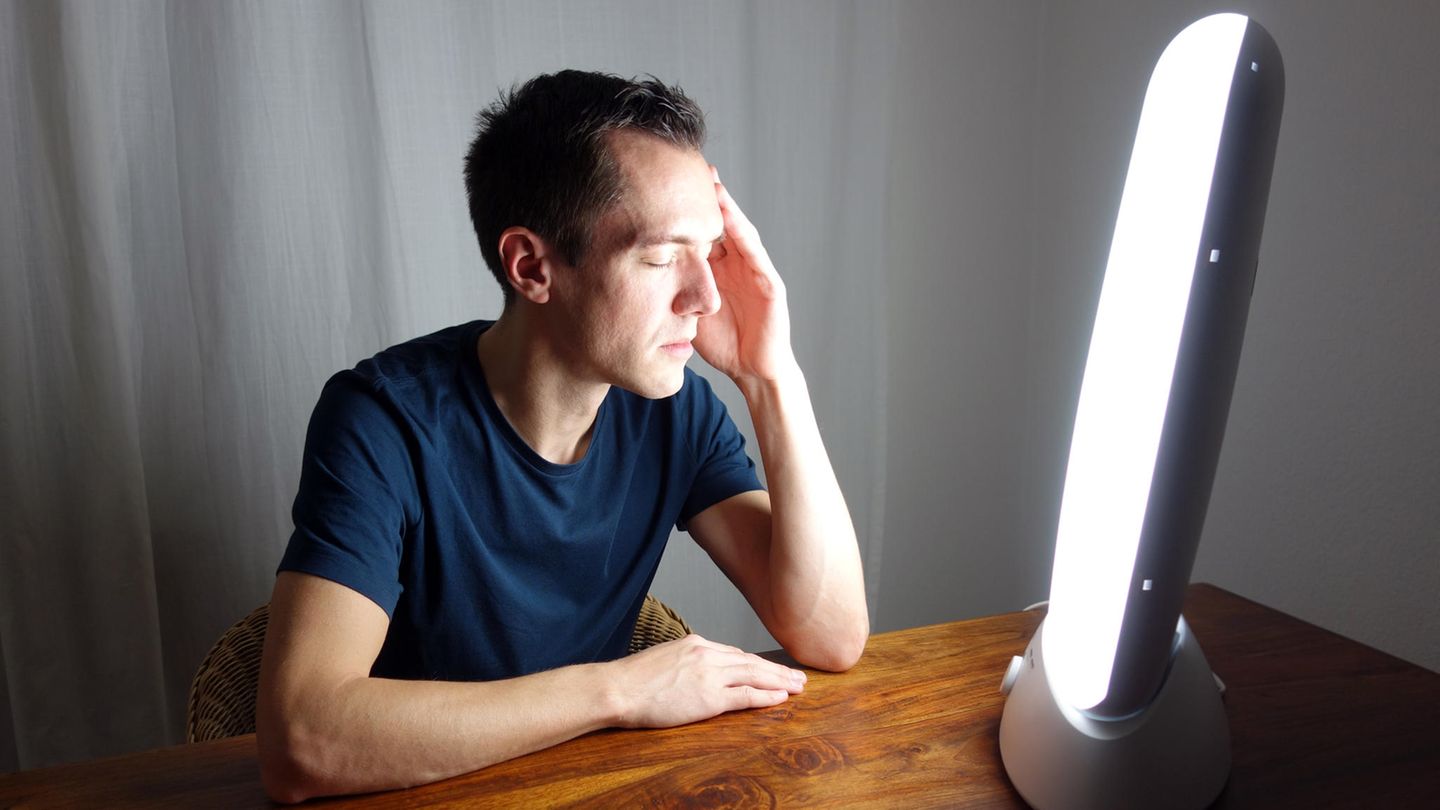Light therapy
How a daylight lamp can counteract the winter blues
Copy the current link
Add to watchlist
When the days get shorter, many people feel listless. In technical jargon, this phenomenon is called seasonal depression, which is caused by the lack of light.
Do you lack any motivation in the low-light season, are you constantly tired and have an increasing craving for sweets? Then you may be suffering from winter depression, known as SAD (Seasonal Affective Disorder). According to the , we only speak of seasonal depression “if symptoms of a depressive episode appear exclusively and repeatedly at a certain time of year, typically in autumn and winter”. An important indication that you have SAD is the fact that your mood changes suddenly in spring – when the days become longer and the hours of sunshine increase. But why is this actually and how can you counteract the bad mood?
How does winter depression occur?
Our internal clock is controlled by two different hormones: In daylight, the body releases increased amounts of serotonin, a messenger substance that can be seen as a type of endogenous antidepressant – also known as the happiness hormone. It lifts our mood and helps us function better. When it gets dark outside, our body converts serotonin into melatonin: a sleep hormone that controls the day-night rhythm. So it makes us tired when it is released more so that we can sleep. So much for the theory. But what does all this have to do with winter depression?
In the autumn and winter months, daylight decreases rapidly, both in duration and intensity. As the darkness increases, the body produces more melatonin, which inevitably means that many people find it difficult to get out of bed and are constantly tired during the day. If melatonin levels are particularly high, seasonal depression can occur. In other words, you constantly feel low in energy, unbalanced, grumpy, sad or even hungry. The bad news is: This situation lasts until spring. The good news is: Light therapy can significantly improve your mood. Completely without medication.
How does light therapy work?
As the name suggests, the therapy is based on artificially generated light, which – from a purely physical point of view – is modeled on sunlight. For the treatment you need a so-called which has an illuminance of at least 2,500 lux. This is how much light you would absorb on a normal day in spring when you look out the window, and in summer even up to 10,000 lux. For comparison: an ordinary room lamp only creates 300 lux to 500 lux. It has even been scientifically proven that people with SAD felt significantly better through regular exposure to radiation. This was partly because her serotonin levels increased. If you have inserted the lamp correctly. You can read more about this in the next paragraph.
How do you use a daylight lamp?
As mentioned, you will need one for radiation with at least 2,500 lux – but an illuminance of 10,000 lux would be even better. There is a time reason for this: the less lux, the longer the treatment takes. In other words, the amount of time you have to sit in front of the lamp shortens as the illuminance increases. If the daylight lamp has 10,000 lux, about 30 minutes are required every day. If it only has 2,500 lux, you have to allow two hours. For the treatment, place the lamp about half a meter to a full meter in front of you so that your eyes can absorb as much light as possible. During this time you are also allowed to read, write or eat.
When do you use the daylight lamp?
To lower melatonin levels during the day, it is best to use the daylight lamp as soon as you get up, ideally between 5:30 and 8:00 a.m. This stimulates serotonin production and automatically starts the day better. It is important that you look directly into the light for a few seconds every now and then so that it can fall on your retina. However, before you do this, you may want to have your eyes examined. Even though daylight lamps have a UV filter and no negative effects of light therapy are known to date, it is safer for people with age-related eye diseases if they consult a doctor in advance.
How quickly does light therapy work?
If you use the daylight lamp regularly, you will usually notice a noticeable improvement after a few days. After two weeks at the latest, you should feel significantly fitter, more alert and more balanced. If your mood still doesn’t improve after 14 days, this could possibly be due to the lighting level – increase the intensity (if possible) and the duration of the treatment. Alternatively, you can use the lamp again in the evening. If the therapy doesn’t work at all, you should talk to your doctor.
Who is a daylight lamp not suitable for?
If you have the symptoms mentioned above, but not only in the dark season, it may well be that you are not suffering from short-term depression. If you don’t feel like your mood swings are seasonal, it’s a good idea to see a doctor before you decide to use a daylight lamp. Although light therapy has been scientifically proven to work for people with SAD, it does not work for people suffering from seasonal affective disorder. It can also happen that you get a headache or dry eyes from a daylight lamp. In this case, you can continue the therapy, but you should shorten the sessions.
Do health insurance companies cover the costs?
Unfortunately, statutory health insurance companies generally do not support the purchase of a daylight lamp, in most cases not even if you have the light therapy carried out in a doctor’s office – although there are certainly exceptions. However, since you can get cheap models with 10,000 lux starting at 30 euros, buying them is not quite that expensive. Of course, you can also spend 150 euros on a daylight lamp, although it usually can’t do more than that, but it does have a few technical gadgets such as a dimmer or tilt adjustment. Therefore, you might as well go with a cheaper model.
A notice: This article contains general information and cannot replace a consultation with a doctor.
*This article contains so-called affiliate links to products in online shops. If a user clicks on it and buys something, the publisher receives a commission from the retailer, not the manufacturer. Where and when you buy a product is of course up to you.
Source: Stern
I’m Caroline, a journalist and author for 24 Hours Worlds. I specialize in health-related news and stories, bringing real-world impact to readers across the globe. With my experience in journalism and writing in both print and online formats, I strive to provide reliable information that resonates with audiences from all walks of life.




